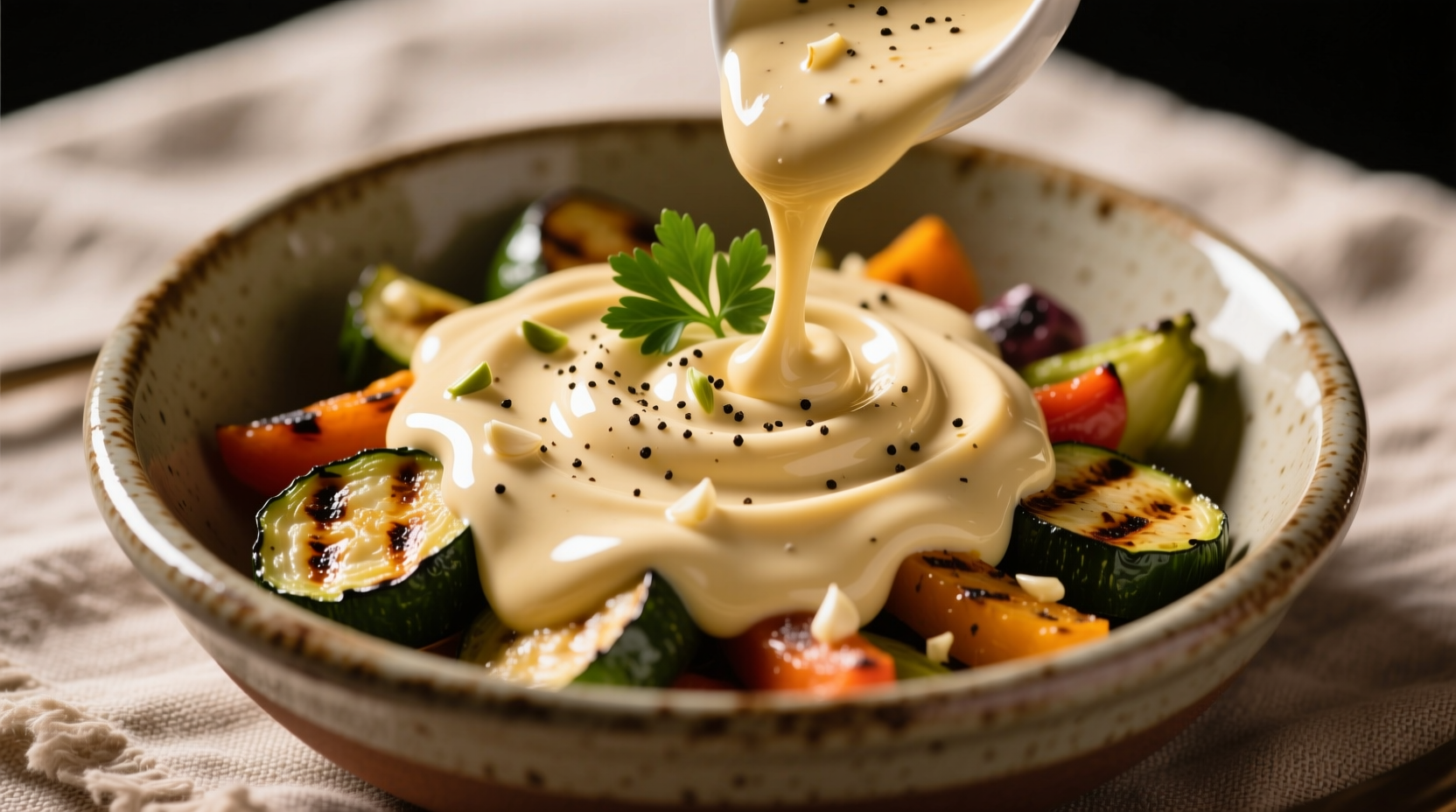The Science Behind Perfect Garlic Cream Sauce
Understanding the chemistry transforms your sauce from ordinary to exceptional. Garlic contains allicin, a compound that develops its characteristic flavor when crushed. When combined with dairy, the fat molecules in cream bind with these flavor compounds, creating a rich, smooth texture. The key is temperature control—cream begins to separate at 180°F (82°C), while garlic burns at just 160°F (71°C). This narrow window explains why many home cooks struggle with curdling or bitter flavors.
| Ingredient Ratio | Best For | Storage Limit | Flavor Profile |
|---|---|---|---|
| 2 cloves : 1 cup cream | Pasta dishes | 3 days refrigerated | Mild, balanced |
| 4 cloves : 1 cup cream | Steak accompaniment | 2 days refrigerated | Robust, pungent |
| 1 whole head roasted : 1 cup cream | Vegetable dipping | 4 days refrigerated | Sweet, mellow |
Step-by-Step Preparation Guide
Follow this professional technique for foolproof results every time. Start by mincing 3-4 garlic cloves finely—using a microplane creates optimal surface area without burning. Melt 2 tablespoons of unsalted butter in a cold pan, then add the garlic. Cook over medium-low heat for exactly 90 seconds until fragrant but not colored. This gentle approach prevents the formation of bitter compounds.
Warm 1 cup of heavy cream to 140°F (60°C) separately—never cold cream directly from the refrigerator. Gradually whisk the warm cream into the garlic mixture while maintaining medium-low heat. Continue whisking until the sauce coats the back of a spoon (about 3-4 minutes). Remove from heat immediately when it reaches 165°F (74°C), the perfect temperature for emulsion stability.

Avoiding Common Pitfalls
Three critical mistakes ruin most homemade garlic cream sauces. First, adding cold cream to hot garlic causes immediate curdling—always warm your dairy first. Second, using pre-minced jarred garlic introduces citric acid that breaks the emulsion. Third, continuing to cook after adding cream creates separation; residual heat continues the cooking process.
For gluten-free versions, replace traditional thickeners with a slurry of 1 teaspoon cornstarch mixed with 2 tablespoons cold cream added at the beginning. Vegan alternatives work best with full-fat coconut milk heated to 140°F and a pinch of xanthan gum to stabilize the emulsion.
Culinary Applications and Variations
This sauce shines across multiple cuisines with simple modifications. For Italian-style pasta sauce, add 1/4 cup grated Parmesan and 2 tablespoons chopped parsley after removing from heat. The French version incorporates 1/4 cup cognac deglazed before adding cream. In Mediterranean preparations, finish with lemon zest and a squeeze of fresh juice.
Professional chefs at the Culinary Institute of America note that roasted garlic creates a dramatically different flavor profile—sweet and mellow rather than pungent. Their technique involves roasting whole garlic heads at 400°F (204°C) for 35 minutes before squeezing the softened cloves into warm cream.
Storage and Reheating Guidelines
Refrigerate leftovers in an airtight container for up to 3 days. When reheating, use a double boiler method: place sauce in a heatproof bowl over simmering water, stirring constantly. Never microwave garlic cream sauce—it will inevitably separate. For longer storage, freeze in ice cube trays then transfer to freezer bags for up to 2 months. Thaw overnight in the refrigerator before gentle reheating.











 浙公网安备
33010002000092号
浙公网安备
33010002000092号 浙B2-20120091-4
浙B2-20120091-4